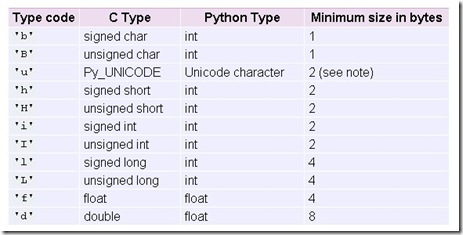1. defining modules
A module is a file containing Python definitions and statements. The file name is the module name with the suffix .py appended. Within a module, the module’s name (as a string) is available as the value of the global variable __name__. For instance, use your favorite text editor to create a file called fibo.py in the current directory.
Now enter the Python interpreter and import this module with the following command:
>>> import fibo >>> fibo.__name__ 'fibo'
If you intend to use a function often you can assign it to a local name:
>>> fib = fibo.fib >>> fib(500) 1 1 2 3 5 8 13 21 34 55 89 144 233 377
2 main
This module represents the (otherwise anonymous) scope in which the interpreter’s main program executes — commands read either from standard input, from a script file, or from an interactive prompt. It is this environment in which the idiomatic “conditional script” stanza causes a script to run:
if __name__ == "__main__":
main()
3 format
Notes:
- The c, s and p conversion codes operate on bytes objects, but packing with such codes also supports str objects, which are encoded using UTF-8.
- The '?' conversion code corresponds to the _Bool type defined by C99. If this type is not available, it is simulated using a char. In standard mode, it is always represented by one byte.
- The 'q' and 'Q' conversion codes are available in native mode only if the platform C compiler supports C long long, or, on Windows, __int64. They are always available in standard modes.
A format character may be preceded by an integral repeat count. For example, the format string '4h' means exactly the same as 'hhhh'.
Whitespace characters between formats are ignored; a count and its format must not contain whitespace though.
For the 's' format character, the count is interpreted as the length of the bytes, not a repeat count like for the other format characters; for example, '10s' means a single 10-byte string, while '10c' means 10 characters. For packing, the string is truncated or padded with null bytes as appropriate to make it fit. For unpacking, the resulting bytes object always has exactly the specified number of bytes. As a special case, '0s' means a single, empty string (while '0c' means 0 characters).
When packing a value x using one of the integer formats ('b', 'B', 'h', 'H', 'i', 'I', 'l', 'L', 'q', 'Q'), if x is outside the valid range for that format then struct.error is raised.
The first character of the format string can be used to indicate the byte order, size and alignment of the packed data, according to the following table:
4 array
Note:
The 'u' typecode corresponds to Python’s unicode character. On narrow Unicode builds this is 2-bytes, on wide builds this is 4-bytes.
When an array object is printed or converted to a string, it is represented as array(typecode, initializer). The initializer is omitted if the array is empty, otherwise it is a string if the typecode is 'u', otherwise it is a list of numbers. The string is guaranteed to be able to be converted back to an array with the same type and value using eval(), so long as the array() function has been imported using from array import array. Examples:
array('l')
array('u', 'hello \u2641')
array('l', [1, 2, 3, 4, 5])
array('d', [1.0, 2.0, 3.14])




![ICZL(4HW[`G]SKTRMPI`AP1 ICZL(4HW[`G]SKTRMPI`AP1](https://i-blog.csdnimg.cn/blog_migrate/761601a5621d2dff462bdcc99d2b9a0a.jpeg)


















 3万+
3万+

 被折叠的 条评论
为什么被折叠?
被折叠的 条评论
为什么被折叠?








